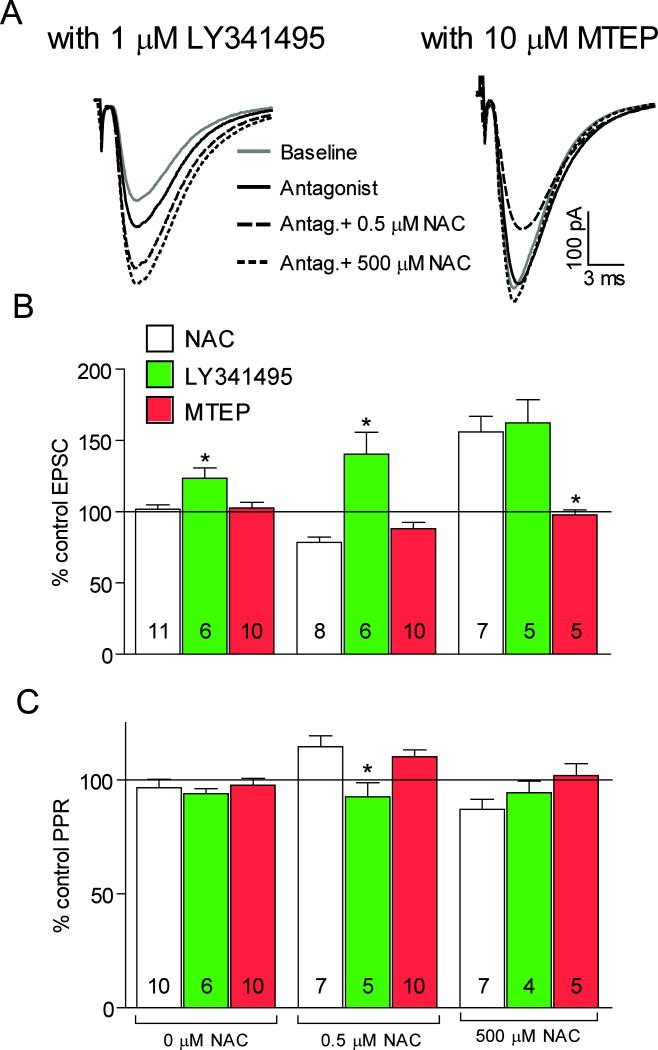Figure 5.
The effects of NAC on neurotransmission are mediated through mGluRs. (A) Representative excitatory postsynaptic currents (EPSCs). (B) (2S)-2-Amino-2-[(1S,2S)-2-carboxycycloprop-1-yl]-3-(xanth-9-yl) propanoic acid (LY341495) (1 μM) increased EPSC amplitude, while -((2-Methyl-1,3-thiazol-4- yl)ethynyl)pyridine hydrochloride (MTEP) (5 μM) was without effect (F(2,26)=6.42, p=0.006). LY341495 prevented the reduction in EPSC amplitude induced by 0.5 μM NAC, while MTEP was without effect (F(2,23)=16.13, p<0.001). Conversely, LY341495 was without effect on the increase in EPSC amplitude produced by 500 μM NAC, while MTEP abolished the increase (F(2,16)=8.58, p=0.004). (C) Neither LY341495 nor MTEP alone affected the PPR ratio, while LY341495 but not MTEP prevented the increase in PPR after 0.5 μM NAC (F(2,20)=5.76, p=0.012). The PPR ratio after 500 μM NAC alone was not significantly changed by MTEP or LY341495. * p<0.05 compared to NAC (white bar) using a Dunnett’s post hoc.

